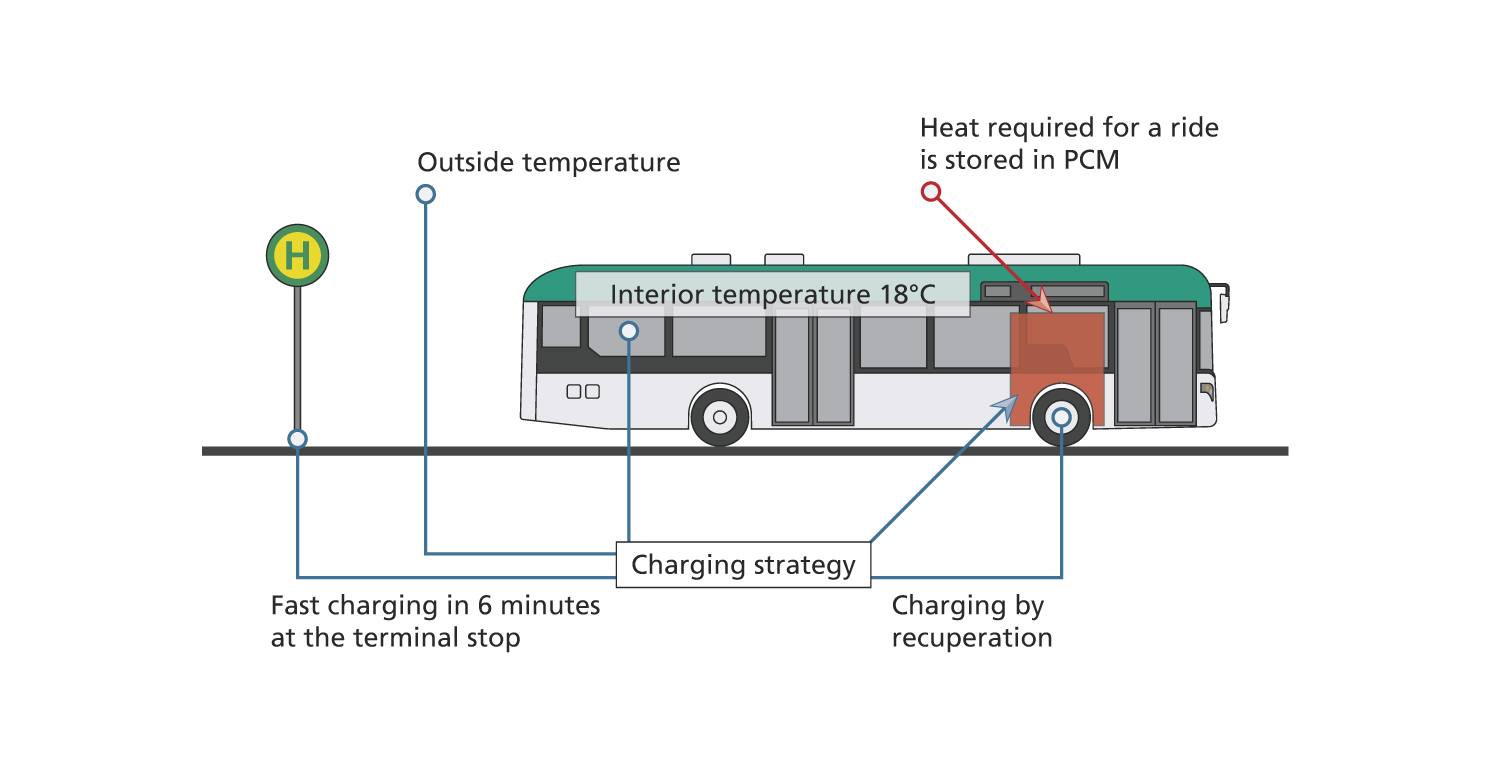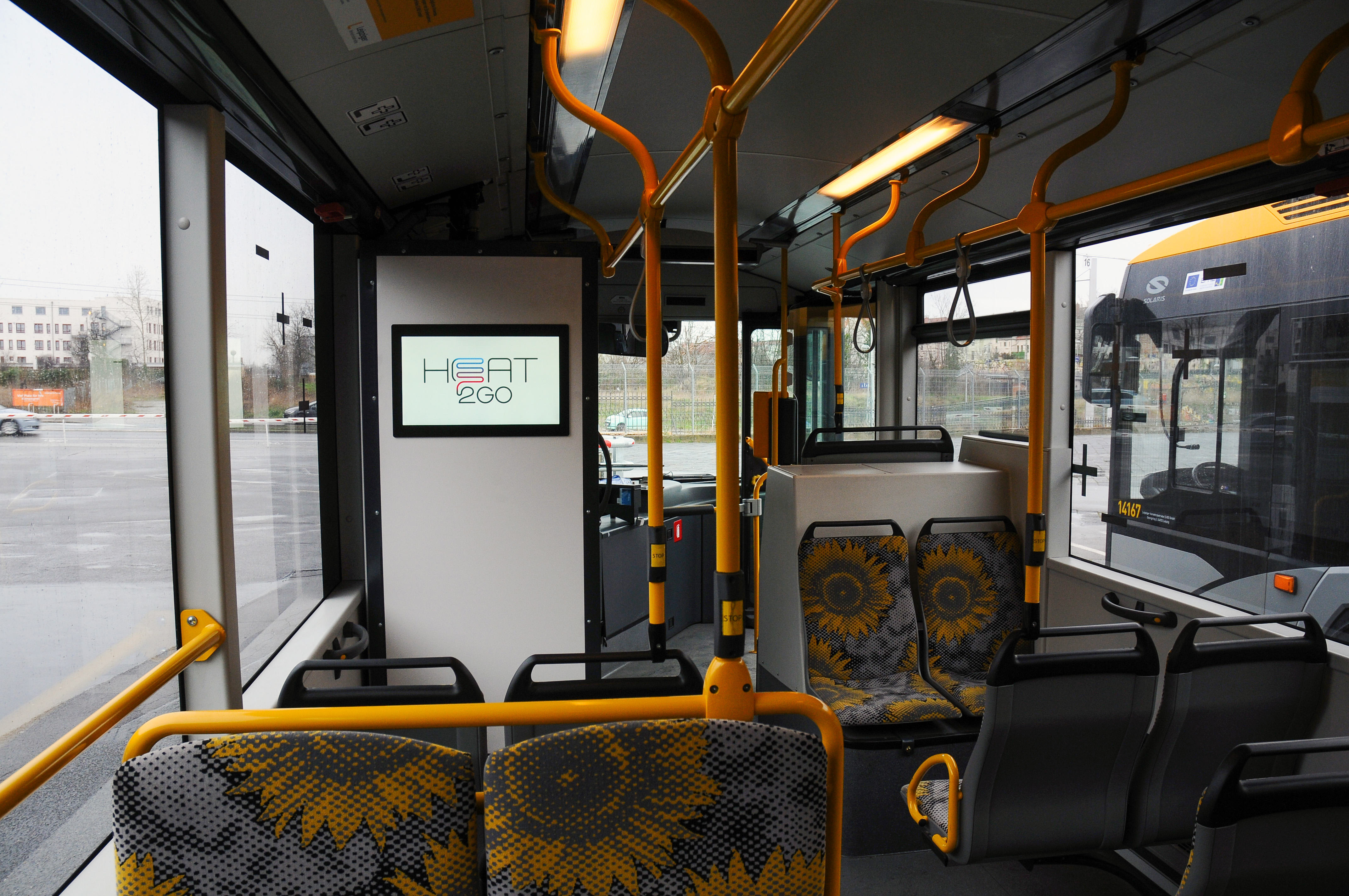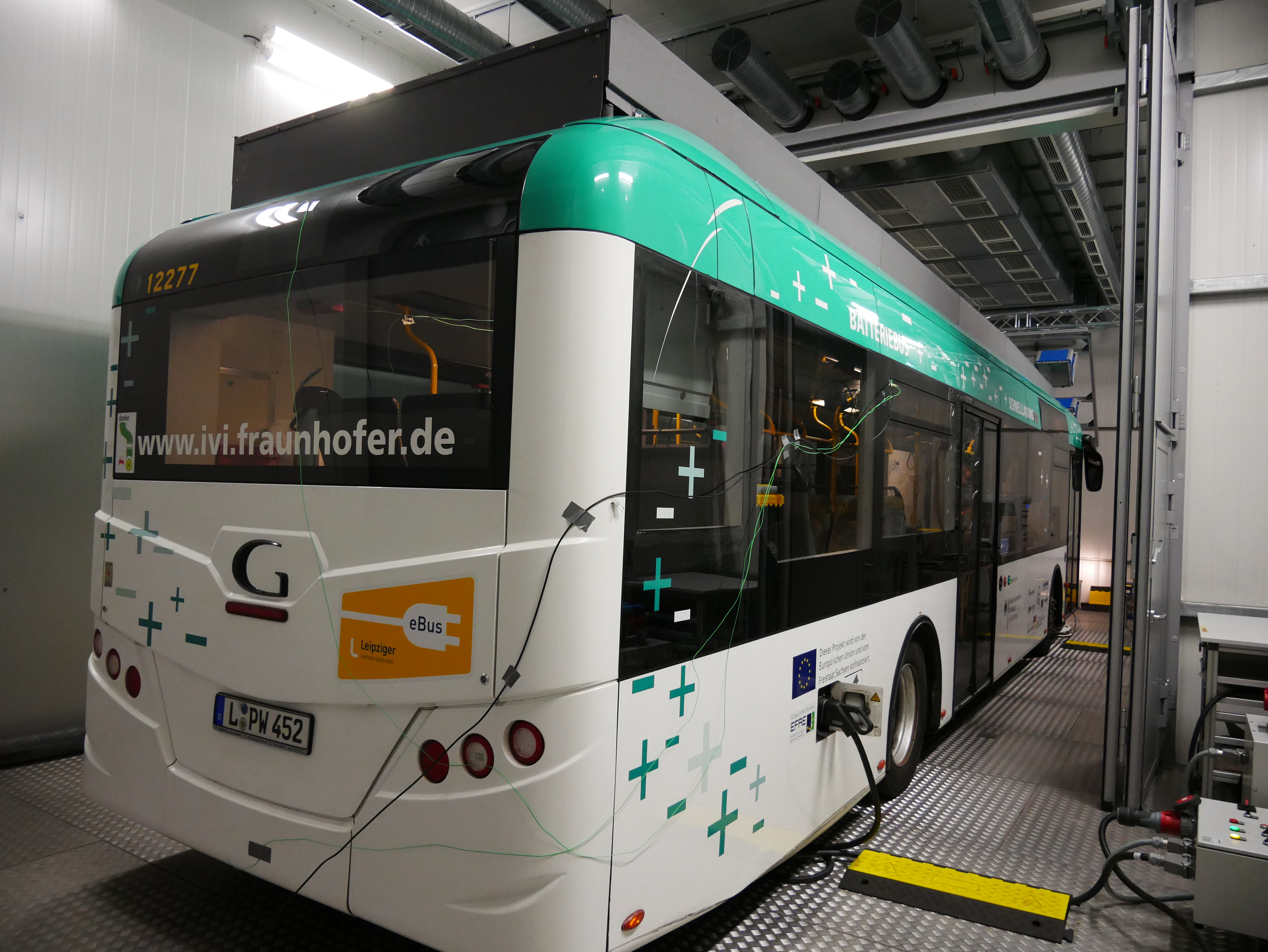Heat2Go
Emission-free heating of fully-electric vehicles is currently only possible with a significant reduction in range. In order to solve this problem, the Fraunhofer IVI developed a fast-charging latent heat storage system in the course of the Heat2Go project. The energy is thus no longer supplied by the traction batteries, but by wayside infrastructure. Battery buses that operate by the principle of opportunity charging are now able to absorb all the energy required for a cycle within a few minutes at the terminal stop and without straining the battery during heating mode.


